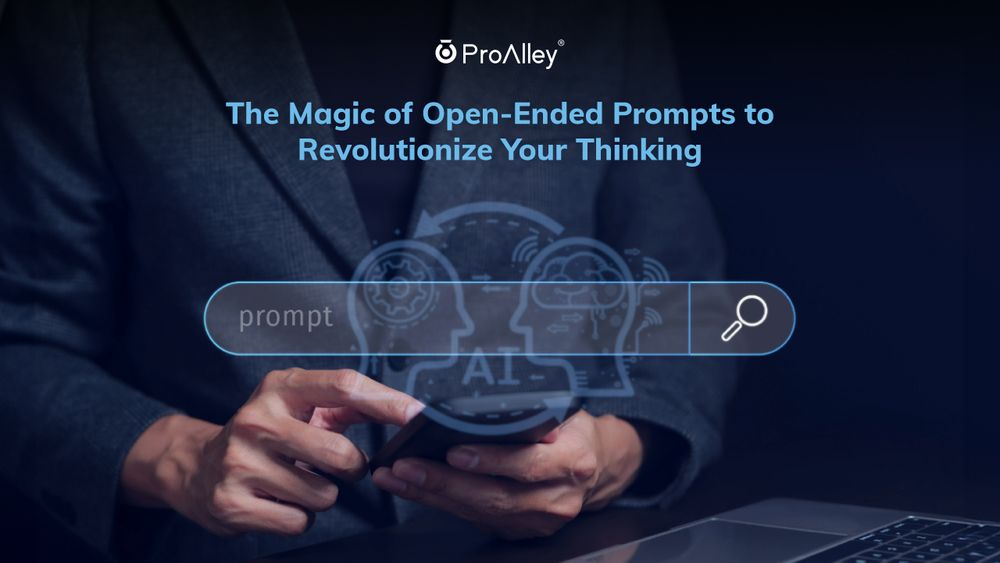The Magic of Open-Ended Prompts to Revolutionize Your Thinking
In a world driven by innovation, the ability to think creatively is more valuable than ever. Open-ended prompts are a simple yet powerful tool to unleash creativity and drive innovation across industries, classrooms, and personal projects. These prompts challenge individuals to think beyond limitations, sparking novel ideas and solutions.
Let’s dive into what open-ended prompts are, why they work, and how to use them effectively to foster creativity and innovation.
What Are Open-Ended Prompts?
Unlike closed-ended prompts that have a single correct answer, open-ended prompts encourage expansive thinking by posing questions or scenarios without definitive solutions. They create a canvas for imagination and exploration, giving individuals the freedom to interpret and respond creatively.
Examples of open-ended prompts:
“How would you design a sustainable city of the future?”
“What would a world without gravity look like, and how would people adapt?”
“If you could reinvent how we communicate, what would it look like?”
These questions inspire brainstorming, problem-solving, and the kind of out-of-the-box thinking essential for innovation.
Why Open-Ended Prompts Foster Creativity?
Encourage Divergent Thinking
Open-ended prompts enable divergent thinking, where individuals explore multiple possibilities rather than converging on a single solution. This leads to a wealth of ideas, many of which may be unexpected or groundbreaking.
Reduce Fear of Failure
With no “right” or “wrong” answers, open-ended prompts remove the fear of failure, encouraging participants to take creative risks.
Promote Engagement
Such prompts spark curiosity and engagement by connecting with the participants’ personal interests, values, and experiences.
Catalyze Innovation
Open-ended questions often address complex or abstract problems, nudging individuals toward unique and unconventional solutions that fuel innovation.
How to Use Open-Ended Prompts Effectively?
Set the Stage for Creativity
Begin by creating an environment conducive to free thinking. This might involve collaborative brainstorming sessions, group discussions, or even a quiet space for personal reflection.
Design Thoughtful Prompts
A great open-ended prompt should:
• Be broad yet focused on a specific theme or goal.
• Encourage imagination and exploration.
• Be relevant to the context or problem at hand.
For example, if fostering innovation in technology, ask:
"How can technology be used to create a more equitable society?"
Encourage Collaboration
Combine open-ended prompts with group activities. Diverse perspectives often lead to richer ideas and foster an environment of collective creativity.
Provide Tools and Resources
Equip participants with the tools to ideate effectively, such as mind maps, prototyping kits, or access to inspiring case studies and examples.
Give Time for Exploration
Creativity takes time. Allow participants to revisit and refine their ideas instead of rushing to conclusions.
Celebrate Diverse Ideas
Foster an inclusive environment where every idea is valued. Even the most unconventional responses can serve as seeds for innovation.
Applications of Open-Ended Prompts
In Education
Teachers can use open-ended prompts to encourage critical thinking and creative problem-solving in students.
Example: “How would you solve a water crisis in your community?”
In Business and Innovation
Open-ended prompts can help teams brainstorm innovative solutions to organizational challenges.
Example: “What new feature would revolutionize our product?”
In Personal Growth
Use these prompts for self-reflection and growth.
Example: “If you could pursue any passion without limits, what would it be?”
To conclude, the open-ended prompts are a gateway to boundless creativity and transformative innovation. Whether you're an educator, a business leader, or simply someone seeking fresh ideas, these prompts can inspire you to see the world differently and push boundaries.
So, the next time you’re brainstorming or problem-solving, try posing an open-ended question. You might be surprised at the extraordinary ideas waiting to emerge!

